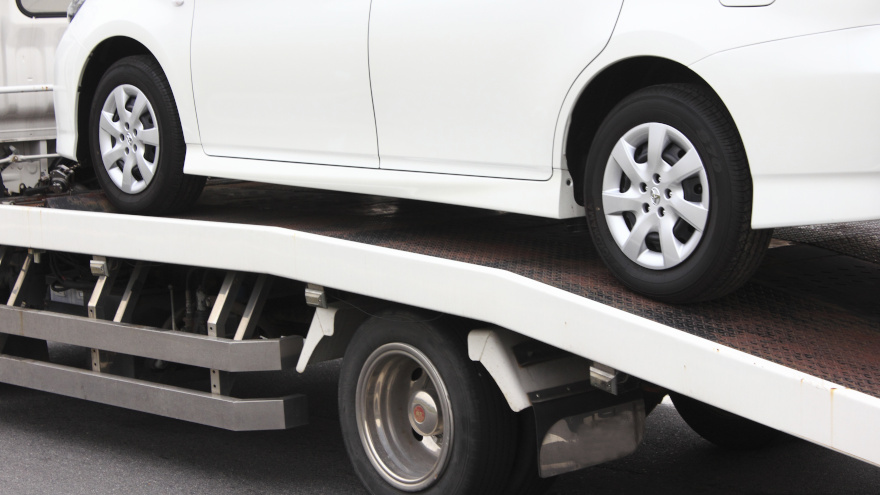Logistics providers must consider new issues as volume of BEVs being shipped rises

Auto logistics providers anticipate a large increase this year in the volume of battery-electric vehicles, or BEVs, they transport. Two areas stand out when discussing handling those electric vehicles versus internal combustion engine vehicles, and each area has its own ramifications for the industry.
“The two biggest differences are mass and helping ensure the battery is conditioned,” Ross Rachey, chief operating officer of ACERTUS, told Auto Remarketing.
An “average” BEVs, because of the heavy battery, weights 20% more than an internal combustion engine, said Rachey.
That changes the load factor, he said. For example, a truck that might carry six Toyota Tacoma pickups may only be able to carry five of the battery electric Tacomas due out soon, he said.
BEVs are “closing in on 20%” of ACERTUS’ business across the board, said Rachey. That includes transportation, storage, and maintenance. It is seeing growth from both traditional auto manufacturers and EV-only automakers, he said.
ACERTUS added capacity in 2023 to address the needs of moving BEVs. “We feel like we learned a lot in 2023,” said Rachey.
Load factor aside, BEV weight also impacts the type of loading equipment and trailers used, Jeremy Louisos, senior vice president at Preowned Auto Logistics, told Auto Remarketing.
“It isn’t just our capacity but also is the equipment going to withstand (the extra weight)? Do we need different kinds of trailers?” he said.
While it is not inherently more expensive to transport BEVs, the change in load factor does impact the price, said Mike Trudeau, executive vice president of business development at Montway Auto Transport.
“The load factor changes, especially if you are moving five or six at a time,” he told Auto Remarketing. “It reduces the number you can carry. It is more expensive to ship EVs because of their overall weight.”
Montway moves around 300,000 vehicles annually and BEVs represent under two percent of its business right now, but Trudeau expects that to “easily double” this year.
Its all about the battery
The BEV battery introduces a swath of new conditions and requirements for logistics providers.
First there is the need to ensure the battery is charged. That doesn’t necessarily mean 100%, however. The optimal rate of charge is generally 60 to 80%, said Rachey, but the required charge differs among auto manufacturers.
“That is why we like OpConnect. It allows us to configure different (manufacturer) needs,” he said.
In December, ACERTUS announced it had partnered with OpConnect, a charging solution provider, to electrify 41 of ACERTUS’ 67 nationwide locations.
ACERTUS electrified close to 60% of its network in 2023 and will have 80% electrified in 2024, said Rachey.
The company invested over a million dollars in 2023 electrifying its sites, and for $30,000 to $80,000 a site can have six to 16 Level Two chargers, he said.
A battery’s level of charge must be monitored even when the vehicles are warehoused because the battery charge slowly degrades over time. “That is different than an ICE vehicle,” said Rachey.
Before loading a BEV for transport it is crucial to ensure that battery is fully charged and that the BEV is in transportation mode, said Trudeau,
“If a used EV isn’t in transportation mode, a battery loses life every day,” he said.
“Thermal events” — a battery catching fire — are big news when they occur, but they aren’t a major concern, said Rachey.
“The thermal fire risk is the one we think the least about; it is very low probability,” he said.
However, it is important that his employees understand “thermal runaway” and know how to handle on if it occurs, said Louisos. That includes ensuring storage facilities have fire blankets on hand, he said.
Louisos is chairman of the International Auto Remarketers Alliance EV Readiness Committee. It is a new committee spun off from the Industry Advancement Committee about a year ago, he said.
The EV Readiness Committee focuses on gathering information with the goal of creating standards around EV shipment.
The committee is “still pretty brand new and those voices are just starting to connect,” said Louisos. “We have quite a ways to go before there are real standards around it.”


